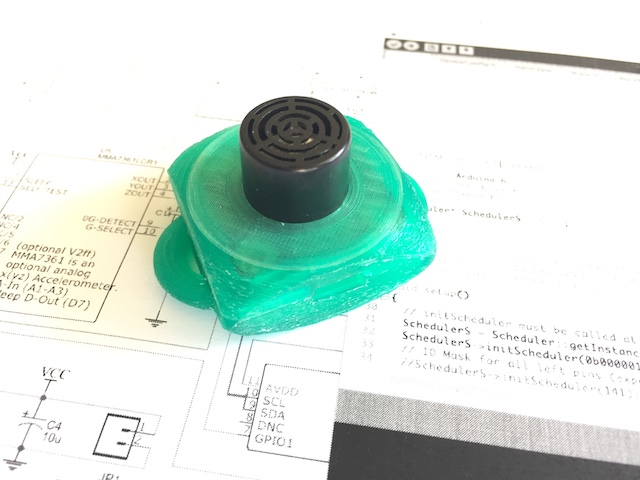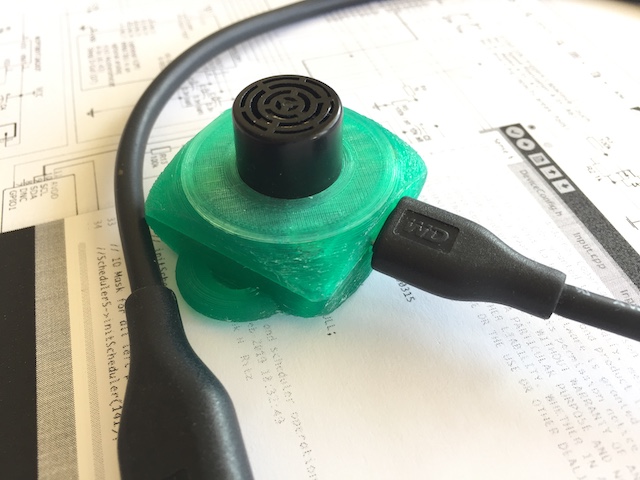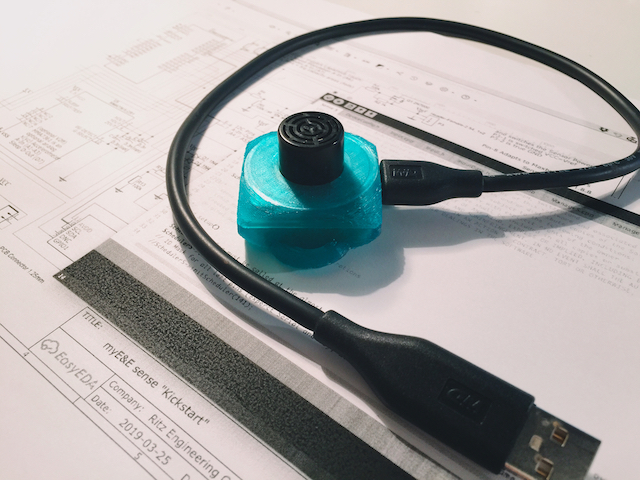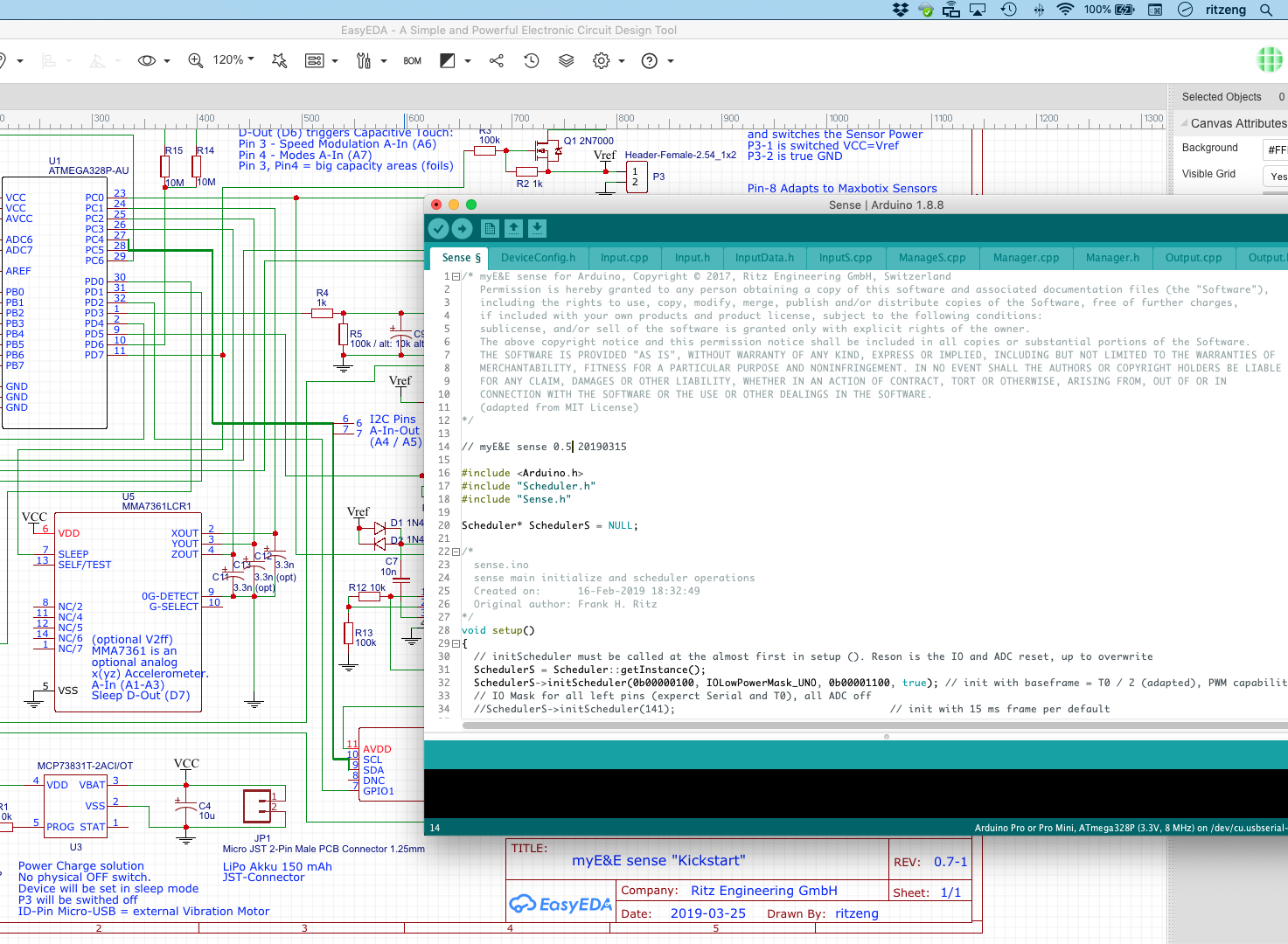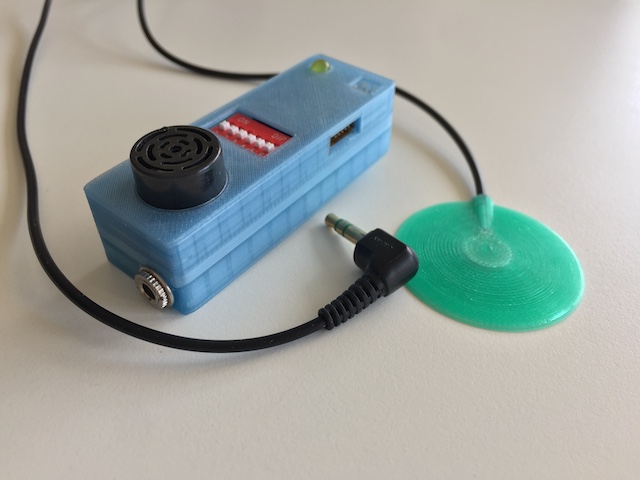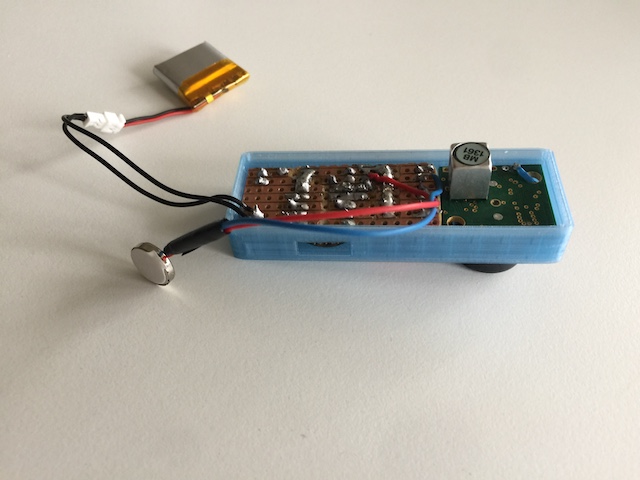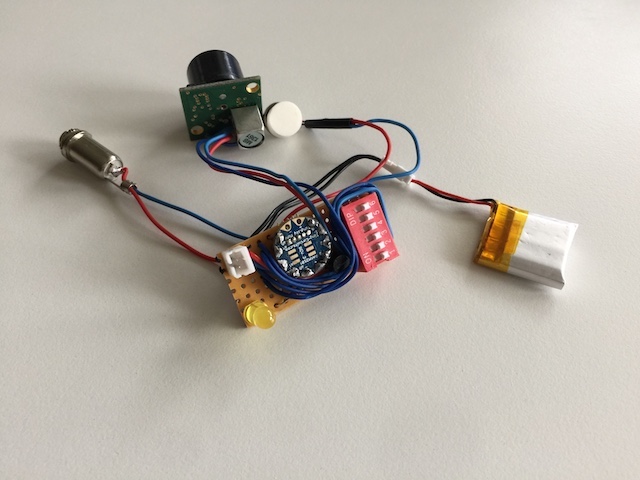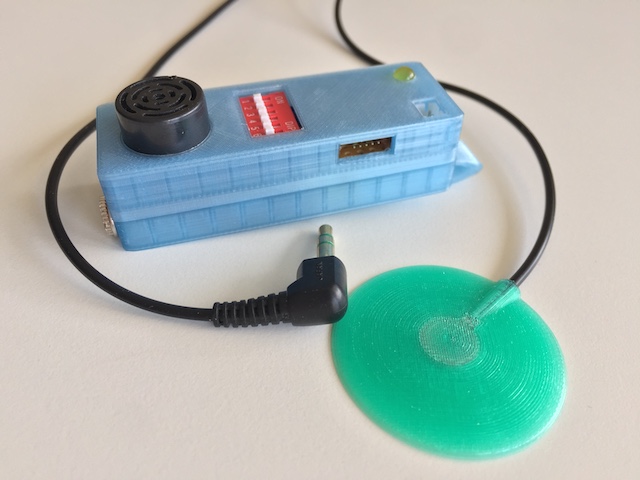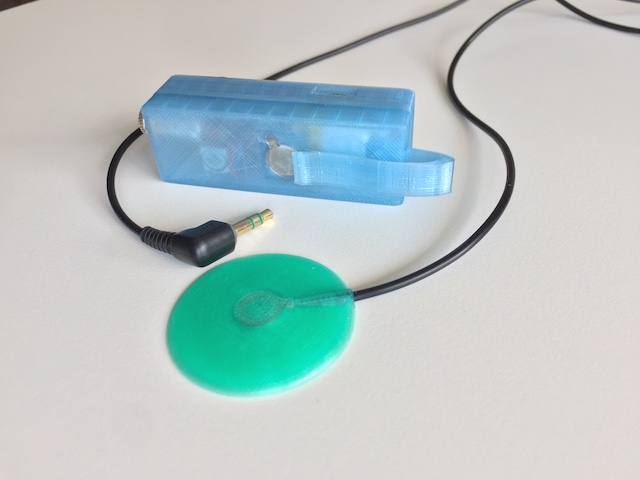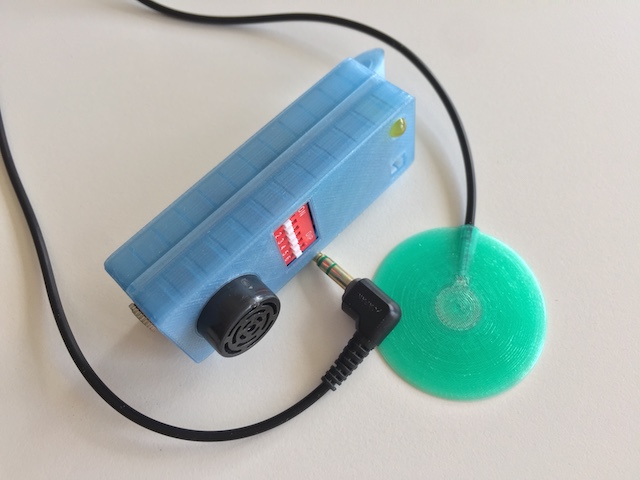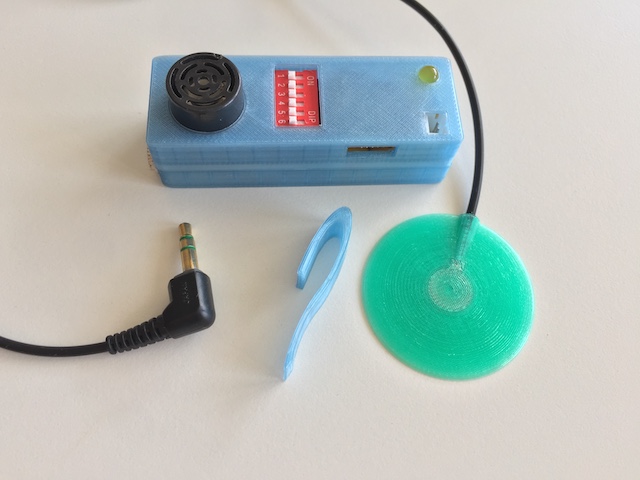sense, SONAR WITH HAPTIC FEEDBACK
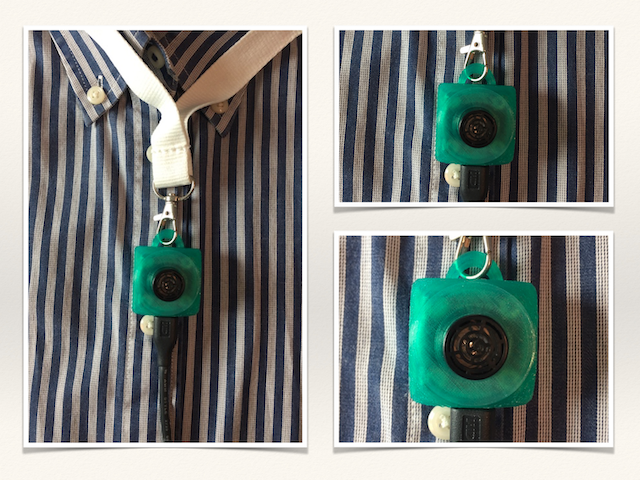
sense, is a simple solution for the visually impaired designed to improve their mobility. It is a technology that helps them to move with more confidence and to avoid colliding with obstacles.
sense is a wearable device that signals the presence of obstacles by providing haptic feedback that can be felt and interpreted by the visually impaired. sense scans in the direction of motion and from above the cane to the maximum body height.
An external haptic actuator with a long supple cable can be worn on the body to enhance the haptic feedback.
sense has been developed and optimized with the participation of visually impaired people and is designed to meet their particular needs.
NEEDS OF THE VISUALLY IMPAIRED
WHERE • WHEN • HOW • WHY • OUTLOOK
We help the visually impaired using miniaturized, portable sensors and with tactile feedback, generally so-called wearables, to recognize objects and obstacles and to do this anywhere and at any time:
- at work,
- at home,
- in the public, and
- in unknown and changeable areas.
sense early recognizes obstacles in the direction of motion and informs about the presence of obstacles as distance information even before the white cane or the sensitive ear and other senses recognize any objects. This feature makes sense an indispensable addition to the mobility and safety of the visually impaired.
Later versions will inform about the object pattern while walking and allow precise, sharp and speedy detail information.
Adjusting the haptic language to the respective needs is an essential feature of the usability of these devices. Hearing remains as a sense completely free separate sense and is not used for signaling, which the visually impaired find very important.
WE UNDERSTAND YOUR PROBLEM
SOLUTION • EQUIPMENT • CONSTRAINTS • TOOLS
Our solution covers the device outlined below and the tools you need.
EXCELLENT PRODUCT.
sense VERSION 1 REQUIREMENTS
STANDALONE • WEARABLE • SAFE DETECTION • ANYTIME, ANYWHERE
sense version 1 is a standalone device which interprets the presence and some type of obstacles into tactile haptic serial feedback felt by the visually impaired.
It recognizes safely, regardless of the time of day and the weather conditions, objects that come above the cane with a range of 10 m in the direction of motion. Here it is helpful if the wearer scans ahead by moving sense slightly left-right.
Checkout: Flyer, Flyer tagged for download.
UTILIZATION
DEEP • INTELLIGENT • COMPLETE • ELEGANT • EMOTIVE
sense has few features, but it is a unique device for the detection of objects for the visually impaired.
The white cane detects obstacles and floor surfaces very selective and sensitive the range of 1-2 m and below your knees.
sense detects obstacles a range of 1-10 m and the whole body height in the direction of motion but with much lesser selective and sensitive capabilities.
You will receive the device from our partners, organizations and our shop in the future.
sense BLOG
Sustainable Development Goals
The identified areas of our work can be abstract covered by: Wearable devices for visually impaired people, and as a general means to reduce inequalities to support the visually impaired and the hearing impaired.
myE&E sense 0.6 features
We began early to ask affected persons and their organizations about their expectations of sense. The sense features should fulfil the most important use cases of these persons. Support organizations for the visually impaired are invited to test new product versions as they become available.
Which are the tools we use for the ‘sense’ development
We decided for the Atmel ATmega328P of the Arduino C++ environment and developed a small task oriented OS (mtos) which manages all aspects of energy savings, deep sleep, scheduling, timing, interrupts and asynchronous operations for development, testing and production. An overview of the how and what is described in this post.
myE&E sense product features
myE&E 'sense' is a small wearable product that supports visually impaired people in conjunction with the white cane or as a stand alone device. We inform you about the use cases that will be developed in its 1st production version.


